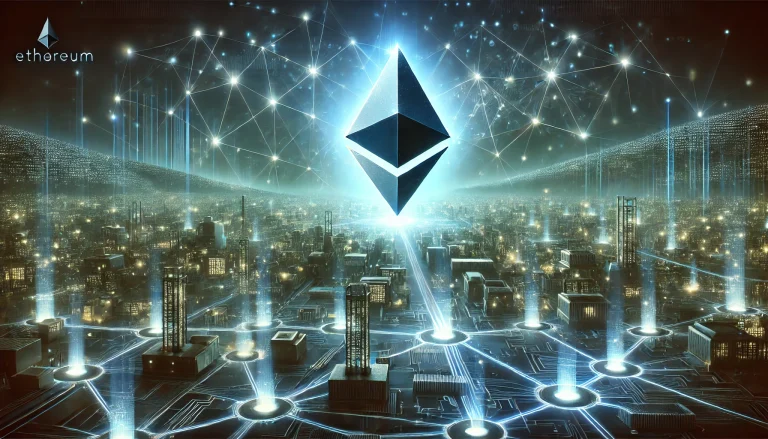Ethereum is one of the most transformative blockchain platforms, extending beyond the concept of cryptocurrency to enable decentralized applications (DApps) and smart contracts. Launched in 2015 by Vitalik Buterin, Ethereum’s vision is to decentralize the internet and create an ecosystem where applications run autonomously, without central control. Its use cases range from finance to supply chain management, making it a key player in the ongoing blockchain revolution.
1. What Is Ethereum?
Ethereum is an open-source blockchain platform that allows developers to build decentralized applications (DApps). Unlike Bitcoin, which is primarily a digital currency, Ethereum serves as a platform for deploying smart contracts—self-executing contracts that run on blockchain. Ether eum’s blockchain is powered by its cryptocurrency, Ether (ETH), which is used to fuel smart contracts and reward miners for securing the network.
2. Understanding the Ethereum Blockchain
Ethereum’s blockchain operates as a distributed ledger, where all transactions and contract executions are permanently recorded. It ensures transparency and immutability, meaning once data is written onto the blockchain, it cannot be altered. This decentralized nature reduces the need for intermediaries, enabling peer-to-peer transactions and direct contract execution without the involvement of a third party, ensuring a high level of trust and security.
3. The Ethereum Virtual Machine (EVM)
The Ether eum Virtual Machine (EVM) is the environment in which all smart contracts on Ether eum are executed. It provides a universal operating system that ensures DApps function uniformly, regardless of the nodes they run on. Developers use the EVM to write and deploy smart contracts using programming languages like Solidity, creating the foundation for decentralized applications.
4. Ether: The Cryptocurrency of Ethereum
The Ethereum platform’s native coin is called ether (ETH). It is utilized to cover the cost of computational services and transaction fees on the Ether eum network. Unlike Bitcoin, which is viewed as a store of value, Ether is more akin to fuel for the Ether eum ecosystem. Developers pay ETH to deploy smart contracts, and users spend it as “gas” to run applications and make transactions on the network.
5. Smart Contracts: The Game Changer
Smart contracts are one of Ether eum’s most innovative features. These self-executing contracts automatically carry out their provisions when certain prerequisites are satisfied. For example, a smart contract could release funds once both parties to a transaction have completed their part of the deal. This eliminates the need for trusted intermediaries such as banks or lawyers, reducing costs and speeding up processes.
6. Decentralized Applications (DApps) on Ethereum
Decentralized applications (DApps) operate on Ether eum without relying on a central authority. These applications use the blockchain to ensure transparency, security, and censorship resistance. DApps range from financial services like decentralized exchanges to gaming and supply chain management tools. They allow users to interact directly with the platform without relying on traditional centralized systems.
7. What Is Ethereum 2.0?
Ethereum 2.0 (ETH2) is an upgrade to the current Ether eum network designed to solve issues of scalability, security, and sustainability. One of the main changes is the transition from Proof of Work (PoW) to Proof of Stake (PoS), where validators are selected based on the amount of ETH they stake in the network. Additionally, Ether eum 2.0 introduces sharding, which divides the blockchain into smaller parts to handle more transactions in parallel.
8. Proof of Stake vs. Proof of Work
Proof of Work (PoW) is a consensus algorithm that requires miners to solve complex cryptographic puzzles to add new blocks to the blockchain. This process consumes significant amounts of energy. Proof of Stake (PoS), Ethereum’s new mechanism, requires validators to stake their ETH as collateral for verifying transactions. PoS is more energy-efficient and scalable, reducing Ether eum’s carbon footprint and network congestion.
9. The Ethereum Ecosystem: DeFi, NFTs, and More
Ethereum is the backbone of decentralized finance (DeFi) and non-fungible tokens (NFTs). Users can lend, borrow, and exchange cryptocurrencies without the need for middlemen thanks to DeFi platforms. NFTs, unique digital assets that represent ownership of virtual or physical items, have surged in popularity, enabling artists and creators to monetize their work in new ways. These innovations are built on Ether eum’s smart contract capabilities.
10. Why Ethereum Matters for the Future
Ethereum’s importance lies in its flexibility and ability to support decentralized applications and smart contracts. It provides a foundation for the development of Web3, the next iteration of the internet, which focuses on user sovereignty and data ownership. With the implementation of Ether eum 2.0 and its potential for innovation, Ether eum is positioned to play a pivotal role in the digital transformation of industries worldwide.
Conclusion
Ethereum is a revolutionary platform that goes beyond cryptocurrency by enabling decentralized applications, smart contracts, and digital innovation. Its transition to Ether eum 2.0 promises to address scalability and sustainability challenges, solidifying Ether eum’s role in the blockchain space. As industries continue to adopt decentralized solutions, Ether eum’s impact will only grow, shaping the future of finance, technology, and beyond.


